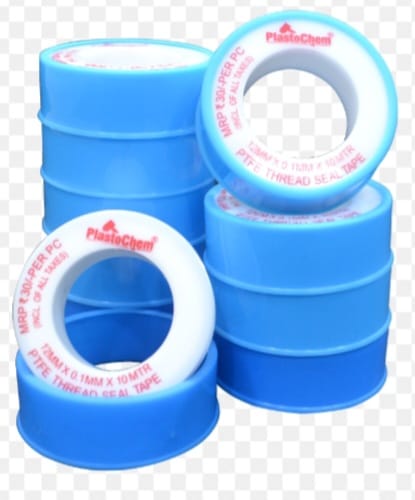Do You Know How to Use PTFE Tape Correctly?
🧠 Quiz: Do You Know How to Use PTFE Tape Correctly?
Test your knowledge and learn the right way to use PTFE (Teflon) tape for leak-proof plumbing joints.
Q1: What is PTFE Tape commonly used for in plumbing?
A) Insulating electrical wires
B) Preventing leaks on threaded pipe joints
C) Sealing flat pipe ends
D) Fixing cracked tiles
✅ Correct Answer: B
PTFE (Polytetrafluoroethylene) tape, also known as Plumber's Tape, is used to seal threaded pipe joints and prevent leaks.
Q2: What direction should PTFE tape be wrapped on pipe threads?
A) Clockwise
B) Anti-clockwise
C) Diagonal
D) It doesn’t matter
✅ Correct Answer: A
PTFE tape should be wrapped clockwise—the same direction most nuts and fittings are tightened. Wrapping it the wrong way can cause the tape to unravel during installation.
Q3: How many times should you wrap PTFE tape around the thread?
A) Once
B) Twice
C) 3 to 4 times
D) 10 times
✅ Correct Answer: C
Wrapping it three to four times provides a sufficient seal without making it too thick to fit the nut.
Q4: What happens if you wrap PTFE tape anti-clockwise?
A) It tightens better
B) It melts
C) It starts peeling off when tightening the fitting
D) It prevents rust
✅ Correct Answer: C
Wrapping the tape in the wrong direction causes it to unwind and peel off when the nut is tightened, making it ineffective.
Q5: What can you combine with PTFE tape for a better seal on heating systems?
A) Glue
B) Paint
C) Silicone-based jointing compound
D) Rubber washers
✅ Correct Answer: C
A jointing compound, such as a silicone-based sealant, adds an extra layer of protection and is especially useful in central heating installations.
Q6: Why do most plumbers use both PTFE tape and jointing compound on new installations?
A) It’s cheaper
B) It's standard practice
C) It avoids future leaks and prevents rework
D) It's required by law
✅ Correct Answer: C
Using both helps ensure a completely watertight seal and saves the trouble of having to drain the system and redo the joint later.
🧰 Bonus Tip:
Always wipe off excess compound after applying it, and smooth it evenly around the thread before tightening the nut.




Comments
Post a Comment